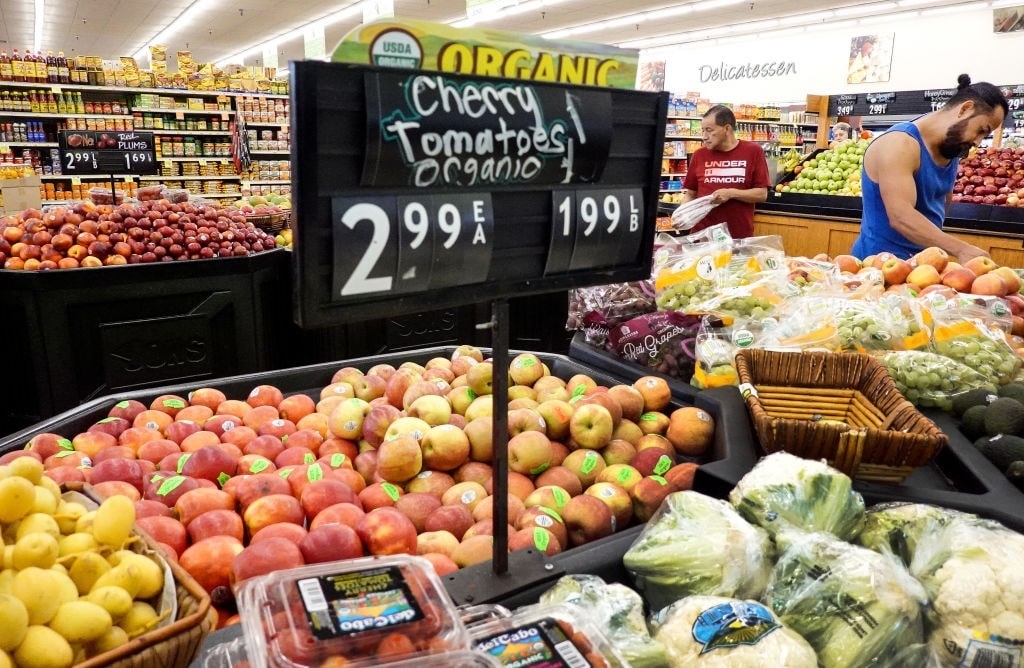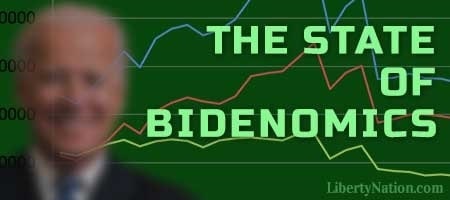



The White House, left-leaning economists, and even a chorus of prominent investors have insisted that the inflation fight is coming to an end. With the consumer price index (CPI) growth rate slowing for 12 consecutive months after hitting a June 2022 peak of 9.1%, it appeared that the Federal Reserve’s quantitative tightening campaign had been a success. Well, not so fast. A trio of new measurements suggest that there could be renewed pressures on prices everyone pays, be it businesses or shoppers. So much for Bidenomics vanquishing the inflation threat.
The annual inflation rate climbed to 3.7% in August, up from 3.2% and higher than the consensus estimates of 3.6%, according to the Bureau of Labor Statistics (BLS). On a month-over-month basis, the CPI rose 0.6%, up from 0.2%. Core inflation, which excludes the volatile energy and food components, eased to 4.3% last month, down from 4.7%. The monthly core CPI jumped 0.3%, up from 0.2%. This represented the second consecutive increase, driven by a dramatic climb in oil and gasoline prices.
While many of the goods and services the public relies on slowed on a year-over-year basis, they continued to remain elevated in August or are showing signs of a reacceleration, from supermarket prices (3%) to shelter (7.3%) to energy (5.6% MoM). Of course, a plethora of kitchen staples surged from July to August, such as beef and veal (1.2%), pork (2.2%), chicken (1.3%), fish and seafood (0.9%), and instant coffee (1.2%). Rent of shelter swelled 0.3%, while rent of primary residence advanced 0.5%.
Despite the uptick in consumer inflation, the futures market expects the Eccles Building to leave interest rates unchanged at this month’s Federal Open Market Committee (FOMC) policy meeting. However, some economists think the door is open for a November rate hike. That said, as long as core inflation is slowing, the central bank will not be impetuous to pull the trigger on another quarter-point rate hike.

(Photo by Mario Tama/Getty Images)
Over the coming months, keep an eye out for the producer price index (PPI). While this might not seem the most exciting inflation report, wholesale prices are generally viewed as a precursor to consumer prices because the PPI measures what businesses pay, costs that will be passed on to customers. In August, producer prices surged 0.7%, up from 0.4% in July and higher than economists’ expectations of 0.4%. This was the sharpest boost in 14 months. The PPI also doubled to 1.6% year-over-year. Core PPI remained unchanged at 2.2% year-over-year and rising just 0.2% month-over-month.
Why was there such a substantial increase in the PPI? Five reasons: diesel fuel, jet fuel, home heating oil, beef, and coffee. Here is what the BLS said in its monthly report:
“Over 60 percent of the August rise in the index for final demand goods can be traced to prices for gasoline, which jumped 20.0 percent. The indexes for diesel fuel, jet fuel, home heating oil, beverages and beverage materials, and iron and steel scrap also moved higher. Conversely, prices for fresh and dry vegetables fell 11.5 percent.”
 Lastly, the BLS released the latest trade prices for August, which did not indicate a positive trajectory in the global marketplace. Last month, export prices soared 1.3%, up from 0.5% in the previous month and much higher than the market forecast of 0.4%. Import prices rose 0.5%, up from 0.1%, and topping the consensus estimate of 0.3%. The data showed that prices skyrocketed for non-agricultural exports, including industrial supplies and materials, capital goods, and automotive vehicles.
Lastly, the BLS released the latest trade prices for August, which did not indicate a positive trajectory in the global marketplace. Last month, export prices soared 1.3%, up from 0.5% in the previous month and much higher than the market forecast of 0.4%. Import prices rose 0.5%, up from 0.1%, and topping the consensus estimate of 0.3%. The data showed that prices skyrocketed for non-agricultural exports, including industrial supplies and materials, capital goods, and automotive vehicles.
As Liberty Nation had warned earlier this year, the case with inflation could be reminiscent of the 1980s and 1990s. So far, it is only two months of data, but it could be the start of a repeat. After the Fed dramatically raised interest rates and successfully lowered the CPI, it kept producing an ebb and flow effect throughout the US economy. It was not until the mid-1990s that an eery calm of steady prices traveled across the country. If this is the 1990s all over again, perhaps we can all enjoy watching Seinfeld episodes for the first time!
